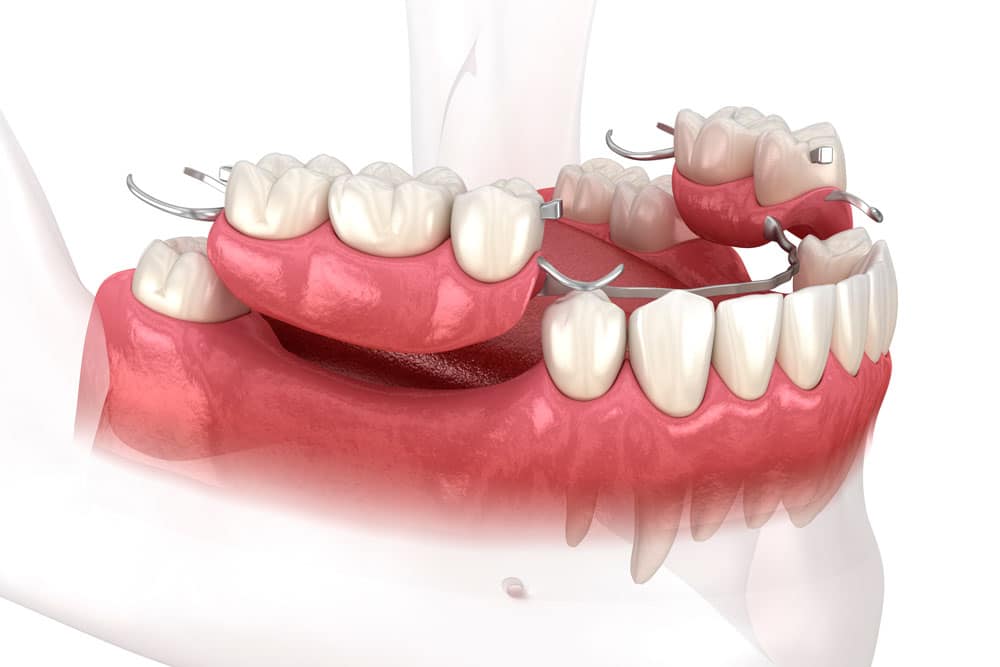
Dentures
Replacing missing teeth with dentures is important for maintaining the aesthetics of your face. Without the structure of the teeth as support, your cheeks and jaw may start to sag, leading to a more aged appearance.
While dentures are an effective replacement for your teeth when it comes to the appearance of your smile and your face, when it comes to function, they are a prosthetic replacement. Just like someone with a prosthetic limb may have limited function compared to a real limb, dentures function differently from natural teeth. The stability of dentures varies from person to person, so the variety of foods that denture-wearers are able to eat also varies. The dentist can go over what foods you should avoid or eat differently (such as cutting meats into smaller pieces for ease of chewing). Speaking while wearing dentures sometimes takes getting used to, especially when forming “s” or “th” sounds. Any speech difficulty usually passes with practice.
What Are Dentures?
Full Dentures
Full dentures attach to your gums through suction between the roof of your mouth (what dentists call the palate) and the denture. Because there is less for them to hold on to (no palate), dentures on your bottom jaw are not quite as secure and may take a little more getting used to.
Partial Dentures
Partial dentures are secured in your mouth by clipping onto your existing teeth. In partials where the base structure is made of metal, the clips will be made from metal. This type of partial is also called a cast partial and it tends to be both thinner and more durable. However, the metal clips on a cast partial may be visible when a patient smiles, depending on which teeth are present and which are being replaced. In partials where the entire structure is plastic, sometimes called a flexible partial, the clips will also be made of plastic. These plastic clips are less visible when the patient smiles.
Procedure Overview
The procedure for getting dentures is fairly simple but may take multiple appointments.
First, your dentist takes a mould or scan of your gums and any remaining teeth. From this mould we will make a model of your mouth so that we can create a denture that fits every small ridge or contour of your jawbone and gums.
Your dentist will invite you back to try on your dentures and make sure they fit comfortably and securely. If the fit is good, you will be able to wear your new dentures home. If not, the dentist will make adjustments until it’s right.

Aftercare
In most cases, a root canal procedure removes enough tooth material that a dental crown is needed to restore your tooth. Fillings can work in milder cases, but only for your front teeth. A filling cannot withstand enough pressure to hold together a molar that has undergone a root canal.
Once you have your permanent restoration, you should take care of your tooth just like all your others. Though a crown or filling will provide your tooth with superior strength and structural support, rigorous oral hygiene is still necessary to ensure a root canal’s success. Proper home care is the difference between a future full of root canals and a lifetime of healthy teeth.


